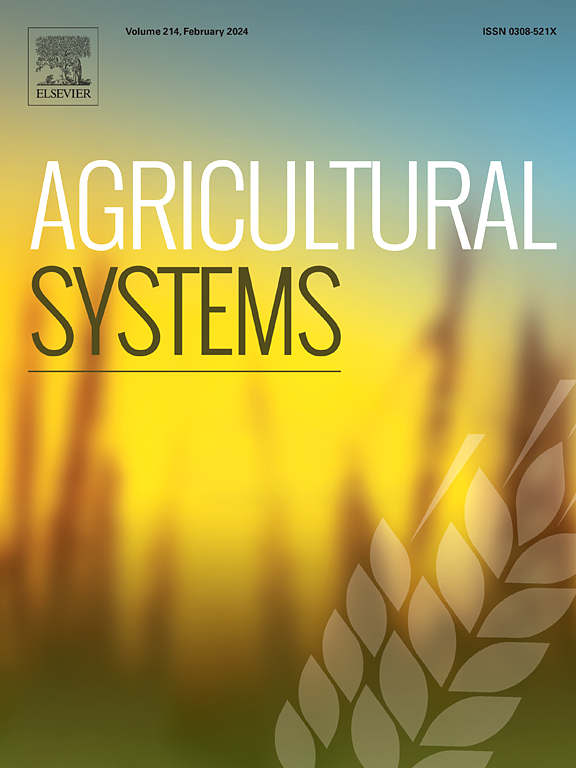哥伦比亚、厄瓜多尔和秘鲁不同可可生产系统的苦乐参半的经济学
IF 6.1
1区 农林科学
Q1 AGRICULTURE, MULTIDISCIPLINARY
引用次数: 0
摘要
可可生产在不同的环境和农业系统中进行,其业绩和创收潜力取决于多种背景因素。这种作物在南美洲的小农中得到推广,作为可持续农村发展的驱动力,但缺乏对该地区不同可可生产系统的经济绩效的系统比较,这导致在使作物在盈利能力和为农民创造收入方面取得成功的条件缺乏一致性和明确性。本文章由计算机程序翻译,如有差异,请以英文原文为准。

The bittersweet economics of different cacao production systems in Colombia, Ecuador and Peru
CONTEXT
Cacao production takes place in diverse environments and agricultural systems, with its performance and income generation potential depending on multiple contextual factors. The crop has been promoted among smallholders in South America as a driver for sustainable rural development, but a systematic comparison of the economic performance of diverse cacao production systems in this region was missing, which led to a lack of consistency and clarity on the conditions that enable the crops' success in terms of profitability and income generation for farmers.
OBJECTIVE
We aimed to understand the economic performance of different cacao production systems from Colombia, Ecuador and Perú, and the factors that affect their profitability and income generation potential with regards to poverty and living income benchmarks under varying contexts.
METHODS
We employed the ‘typical farm approach’ to perform a comparative analysis of fifteen different cacao production systems from six distinct agroecological regions from Colombia, Ecuador and Perú.
RESULTS AND CONCLUSIONS
Eight out of the fifteen systems analyzed were found to be economically viable, while the remaining systems generate considerable losses. Positive outcomes depend on a combination of factors including sufficient prices, yields and land availability, adequate labor allocation, timely diversification, subsidies and low costs of productive factors. Considering those factors, we identified minimum conditions for achieving profitability and living incomes.
SIGNIFICANCE
Our findings provide essential information to decision makers on the limitations of cacao productive systems for achieving a living income, as well as the type of diversification, minimum prices, area and yields that could enhance their economic sustainability. Based on our findings, we discuss the relevance of subsidies for improving the system's performance. Finally, we suggest the use of different indicators and standardized assumptions to allow more reliable comparisons between cacao production systems.
求助全文
通过发布文献求助,成功后即可免费获取论文全文。
去求助
来源期刊

Agricultural Systems
农林科学-农业综合
CiteScore
13.30
自引率
7.60%
发文量
174
审稿时长
30 days
期刊介绍:
Agricultural Systems is an international journal that deals with interactions - among the components of agricultural systems, among hierarchical levels of agricultural systems, between agricultural and other land use systems, and between agricultural systems and their natural, social and economic environments.
The scope includes the development and application of systems analysis methodologies in the following areas:
Systems approaches in the sustainable intensification of agriculture; pathways for sustainable intensification; crop-livestock integration; farm-level resource allocation; quantification of benefits and trade-offs at farm to landscape levels; integrative, participatory and dynamic modelling approaches for qualitative and quantitative assessments of agricultural systems and decision making;
The interactions between agricultural and non-agricultural landscapes; the multiple services of agricultural systems; food security and the environment;
Global change and adaptation science; transformational adaptations as driven by changes in climate, policy, values and attitudes influencing the design of farming systems;
Development and application of farming systems design tools and methods for impact, scenario and case study analysis; managing the complexities of dynamic agricultural systems; innovation systems and multi stakeholder arrangements that support or promote change and (or) inform policy decisions.
 求助内容:
求助内容: 应助结果提醒方式:
应助结果提醒方式:


